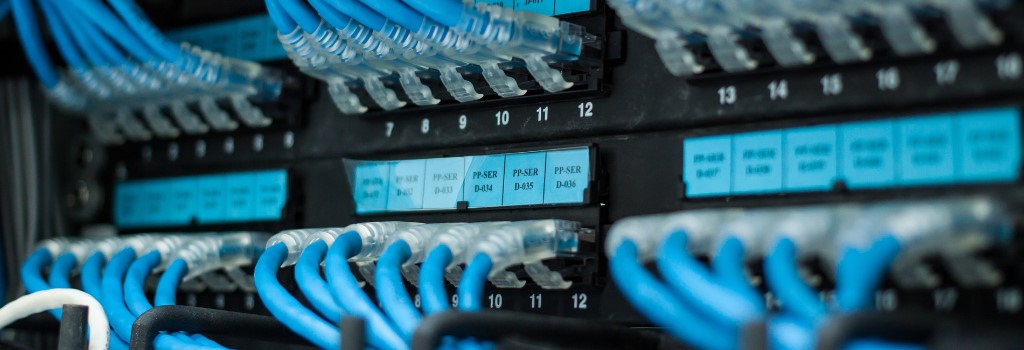Eagle-Lanner tech blog
- 세부
- Super User에 의해 작성됨
The advent of the 5G has ushered in a new era of connectivity with its unparalleled speed, low latency, and massive device capacity. While 5G has garnered significant attention for its faster internet speeds and improved mobile experiences, its true potential lies in transforming industrial networking. In this blog, we delve into the realm of Industrial 5G, exploring how this cutting-edge technology is revolutionizing the manufacturing sector and propelling it into the future.
더 읽기: Unleashing the Power of Industrial 5G: Revolutionizing Connectivity in the Manufacturing World
- 세부
- Super User에 의해 작성됨
This rapid evolution of AI is impacting many aspects of modern life, and businesses must now consider where and how to use these tools. One of the critical areas where AI is being used today is in the field of network security. Network security is an essential aspect of modern-day business operations as it protects sensitive information and data from cyber threats.
- 세부
- Super User에 의해 작성됨
Artificial intelligence (AI) is transforming the way we interact with technology and industries across the board, and edge AI is no exception. Edge AI refers to AI algorithms and models that run on devices or hardware at the edge of a network, as opposed to being processed in the cloud or on a centralized server. This approach reduces latency, conserves bandwidth, and increases privacy by keeping data local. From autonomous vehicles to intelligent drones and robots, the demand for high-performance AI processing solutions continues to grow. One such solution is Nvidia’s Jetson family of AI-enabled edge devices, which includes the Jetson Xavier NX, Jetson Orin NX, and Jetson Orin Nano. Let’s explore and compare these devices, focusing on their AI capabilities and processing power.
더 읽기: Boosting AI Performance at the Edge with NVIDIA Jetson
- 세부
- Super User에 의해 작성됨
As 5G networks continue to roll out across the globe, the demand for high-speed connectivity has continued to escalate. This surge in demand for agile, high-performance, and scalable networks has led to an increase in the deployment of virtual radio access networks (vRANs), which separate the hardware and software components of a mobile network. To enhance the performance of vRANs, Intel has introduced the Intel vRAN Boost solution. Another factor expected to drive the adoption of Intel vRAN Boost is an increase in complex applications beyond mobile broadband that require different 5G network behavior.
더 읽기: Optimize Virtualized Radio Access Network with Intel vRAN Boost
- 세부
- Super User에 의해 작성됨
The new connected world requires wireless connectivity everywhere you go – whether it is at home, on the go, or at work. The rapid increase in the volume of data, plus the need to process said data in multiple places – at the endpoint, the edge, and in the cloud – has created a challenge and made faster movement of data a priority. We have discussed previously how Open RAN provides Communications Service Providers (CSPs) more choice and flexibility to efficiently and cost-effectively deploy their radio networks, let's further explore the abilities of accelerator cards.
더 읽기: High-PHY PCIe Inline Accelerator Card for 5G Open RAN Solutions
- 세부
- Catherine Williams에 의해 작성됨
Nowadays, private 5G is not only for telecommunication networks, it is an integrated solution including networks, cloud computing, edge computing, and application platforms. For vertical industries, deploying both a private 5G network and a multi-access edge computing (MEC) solution is a suitable option to accelerate the process of digital transformation. Private 5G network provides security, speed, scalability, and stability required to process data efficiently. Edge computing further supports latency-sensitive industrial applications enabling time-sensitive data to be processed quickly at the edge.
더 읽기: Deploy Private 5G Networks and MEC in Vertical Market Sectors
- 세부
- Catherine Williams에 의해 작성됨
The railway industry has been an essential part, used as a means of transportation for passengers or to carry freight, of every country in the world, some call it the economic backbone of every country. When we talk about digital transformation in the railway sector, we usually think of e-ticket machines, passenger information displays, and onboard connectivity aka passenger Wi-Fi, however technological advancements in the rail industry have increased system interconnections, signaling systems, train control systems, and telemetry.
더 읽기: Exploring Emerging Cybersecurity Threats for Railway Industry












